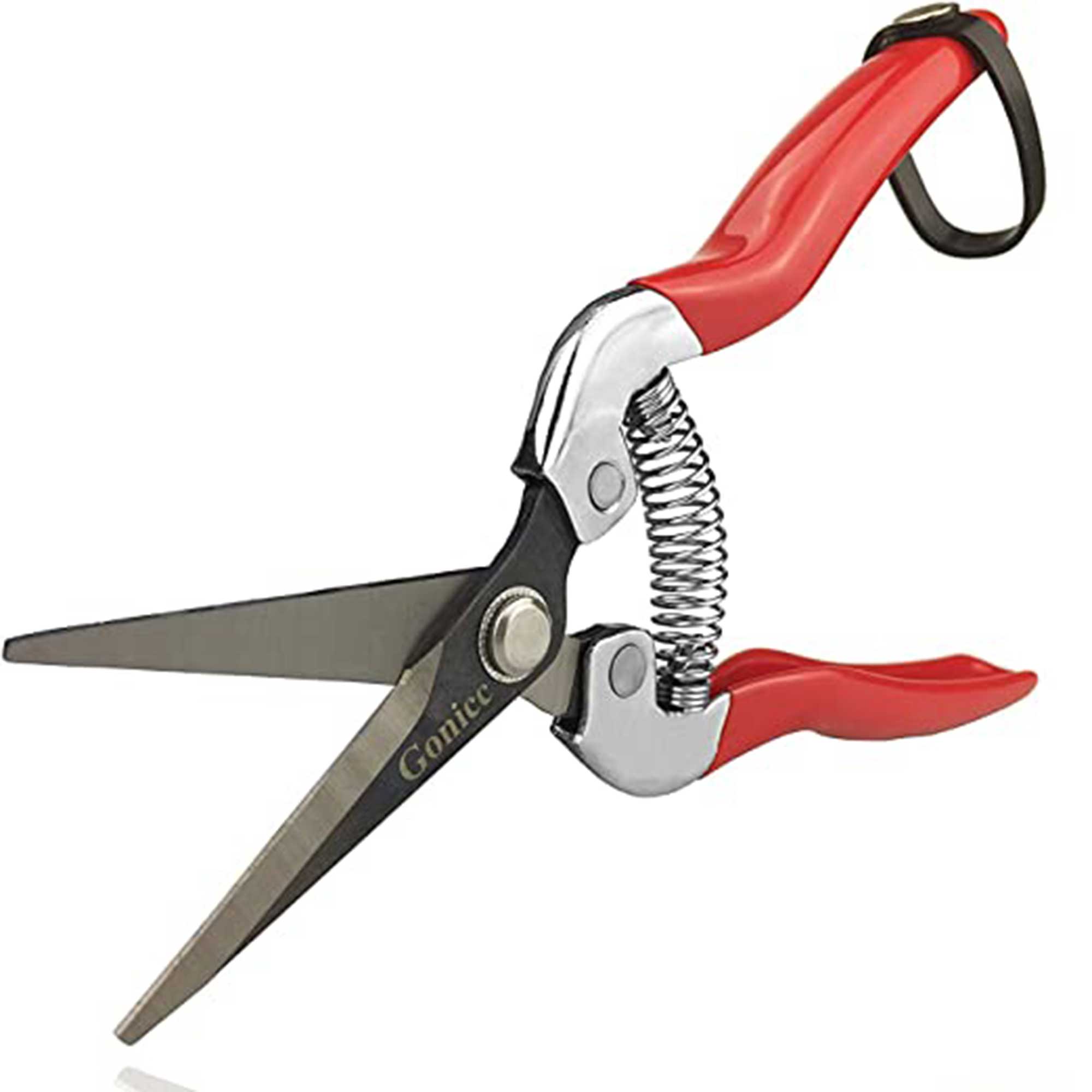Deadheading mistakes – 5 pruning errors to avoid when tidying up your blooming plants
There's an art to removing spent blooms correctly, but follow these expert tips and you'll be rewarded with better results
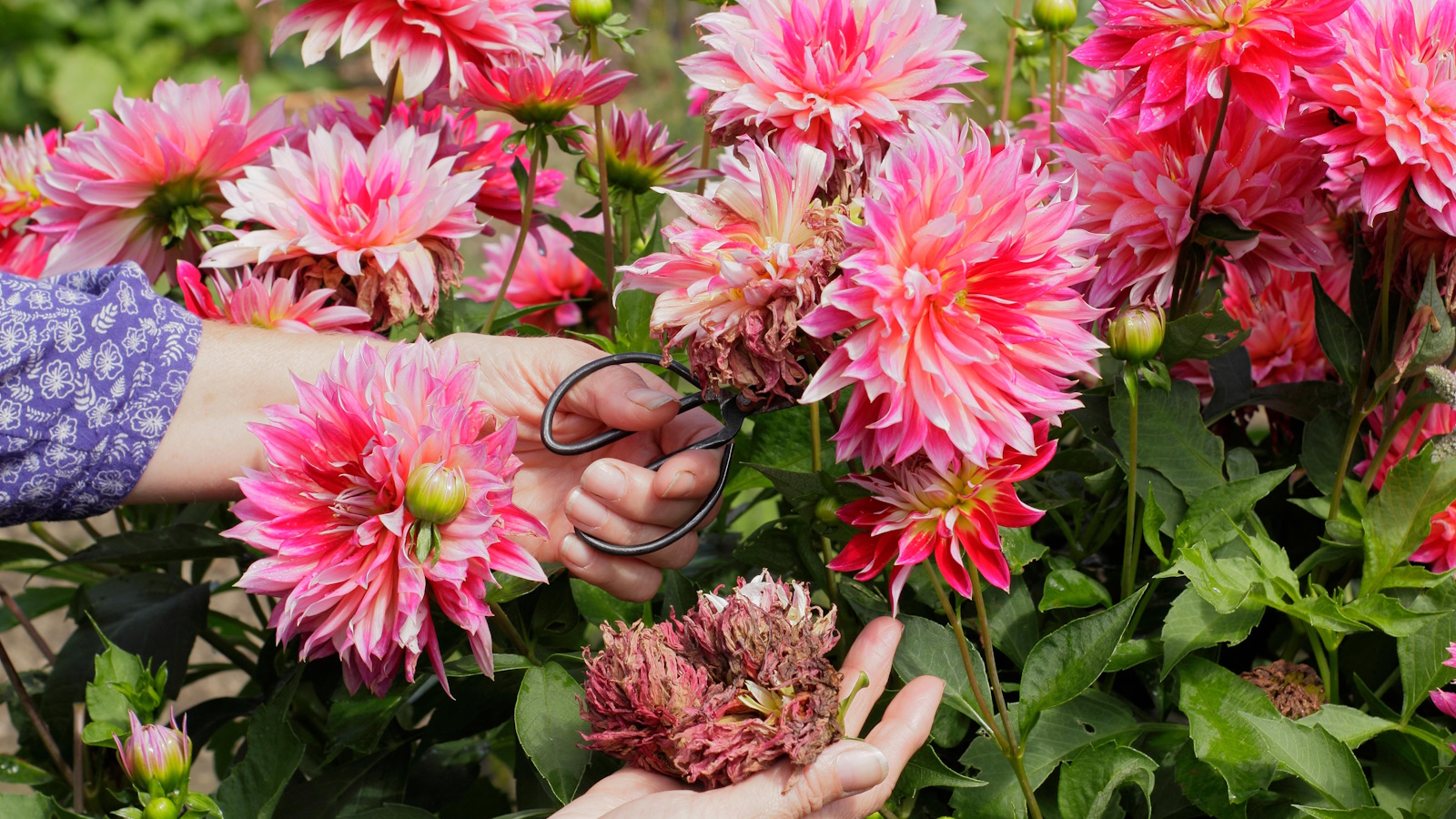

Tenielle Jordison
Deadheading is a task at the top of many gardeners' to-do list at the end of each season. When flowers have finished showing off their colorful displays, it's time to remove their fading blooms to encourage further growth. It's quite a simple task, but there are a few common mistakes that result in more harm than good.
There are two main reasons for adding deadheading to your spring gardening checklist and summer gardening checklist. The first is to neaten up the appearance of plants by removing faded blooms, which can really make a difference to the overall aesthetic of a backyard. The second, if desired, is to prevent plants from producing seed. This, in turn, allows energy to be channeled into strong, new growth and more flowers for the season. It can also prevent new, unwanted plants from cropping up around your flower beds uncontrollably.
We spoke with experts to find out what the most common deadheading mistakes are and here's what they told us to avoid doing.

Removing faded flowers will instantly refresh your garden beds
5 mistakes to avoid when deadheading your plants
Keep your plants healthy and your borders and container garden displays thriving with these expert tips.
1. Missing out on free plants by removing every faded flower
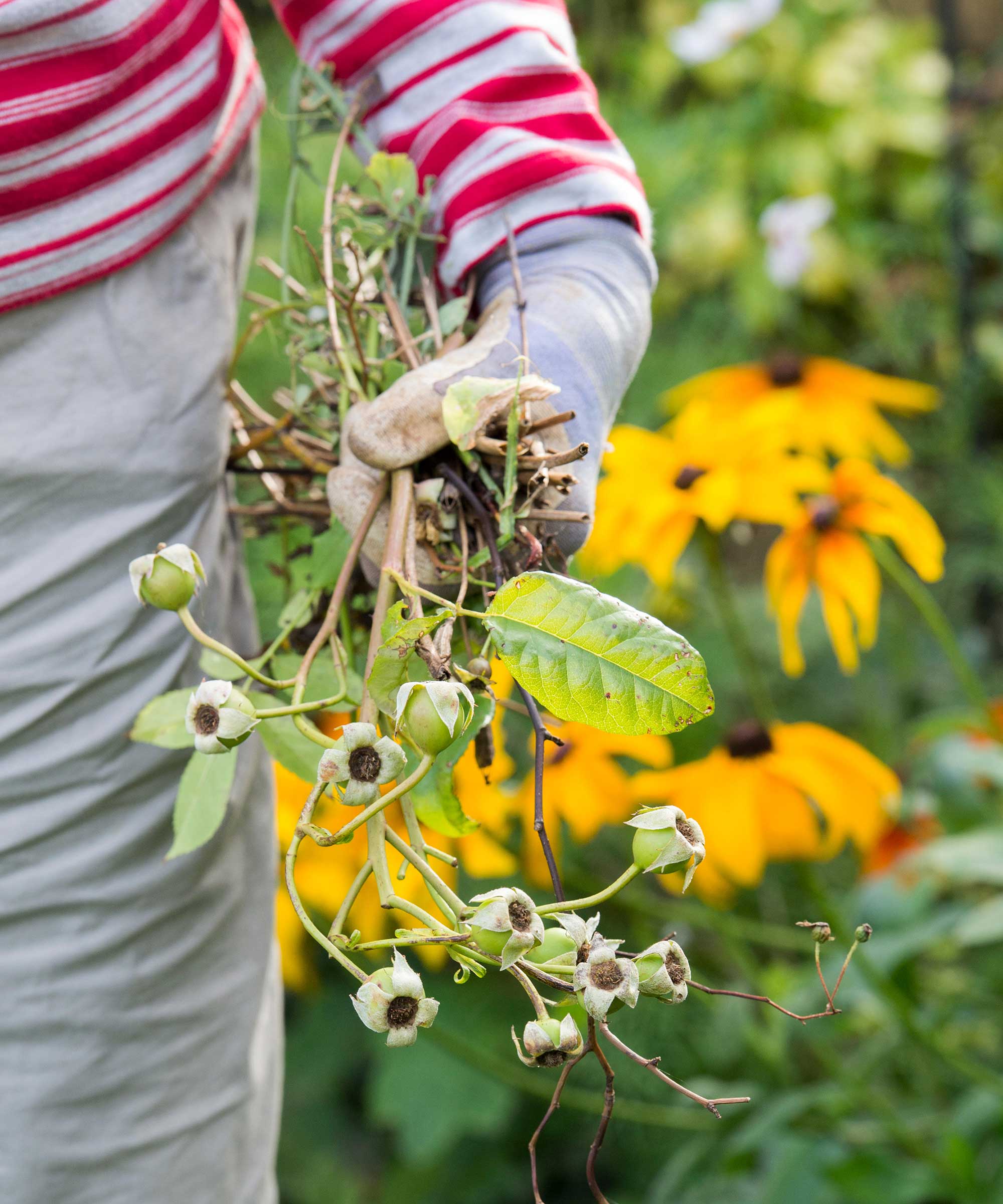
Don't miss the opportunity to collect seeds from your plants
Collecting seeds from homegrown flowers and then planting them in trays is one of the easiest and cheapest ways to bring more blooms to your garden. But, if you deadhead all your plants' flowers, there will be no seeds to sow.
By leaving just a flower or two alone as you tidy the others, you'll be rewarded with a healthy harvest of seeds. These can be gathered and stored, ready for sowing later on. Or, if you don't mind a more organic look, you can simply leave them to fall and naturally self-sow.
Gardening expert John Negus leaves a couple of his hellebore flowers in place when deadheading, for instance. 'Hellebores self-propagate easily and you often find seedlings shooting up around the parent plants,' he says.
Design expertise in your inbox – from inspiring decorating ideas and beautiful celebrity homes to practical gardening advice and shopping round-ups.

John has been a garden journalist for over 50 years and regularly answers readers' questions in Amateur Gardening magazine. He has also written four books and has delivered many talks over the years on horticulture.
2. Cutting in the wrong place

Cut back to a leaf to avoid leaving unsightly stalks sticking out of your flower beds
One of the biggest pruning mistakes is cutting in the wrong place and this applies to deadheading, too.
'Initially, cut the flowers directly above the node where they originate. This will cause the plant to initiate new flower heads at this node,' says Dr. Larry Stein, professor and AgriLife Extension Horticulturist at Texas A & M University.
Cutting just above a leaf node leaves the part of the stem that will produce new blooms. By cutting too far down, you can discourage new growth.
You should likewise take care not to cut away any new buds that have already started to grow, as this could disrupt the flowering cycle.

Larry Stein, Ph.D. is a professor and AgriLife Extension Horticulturist. Stein received his B.S. in Horticulture from Texas A & M University in 1979 followed by a M.S. in 1981 and Ph.D. in 1985. He was appointed Extension Horticulturist at the Texas A & M Research and Extension in Stephenville in 1985 to work on pecans, fruit crops, and vegetables. In 1992 he transferred to the Research and Extension Center in Uvalde to continue work in these same areas and was promoted to Professor. Stein was named Associate Department Head for Extension Horticulture in September of 2012.
3. Using the wrong tools

Keep your gardening tools clean
Deadheading doesn't call for any fancy tools, just some essential gardening tools. In fact, some plants, such as pelargoniums, can be deadheaded by hand by pinching with a forefinger and thumb. Or, you can simply snap out the entire flower stalk if the whole cluster of blooms has gone over. However, a pair of snips or pruners can come in handy for tougher stems or more precise cuts.
While bypass pruners are suitable for soft-stemmed plants, if you're cutting through thicker stems, it's worth switching to an anvil pair for a cleaner cut. 'A sharp knife or hand pruner are best used to remove the flowers as opposed to pulling them off. In this way you are sure to not injure the stem tissue where the flower is removed,' says Larry.
Whatever you use, ensure you clean your pruning shears or other tools beforehand and take care to re-clean it as you work between plants to lessen any risk of spreading diseases. 'Simply wiping down your tools with a disinfectant solution or rubbing alcohol can help keep your plants healthy and disease-free,' says Becky Decker from Bonjour Green.

Becky Decker’s love for gardening has been a lifelong journey. Her deep-rooted knowledge is complemented by her Bachelor’s degree in Horticulture from the University of Green Valley. Prior to leading BonjourGreen.com, Becky worked as a garden consultant, helping countless individuals turn their outdoor spaces into vibrant, thriving gardens. Her experience spans over a decade, making her a trusted authority in the gardening community.
4. Removing dead flowers that have ornamental value
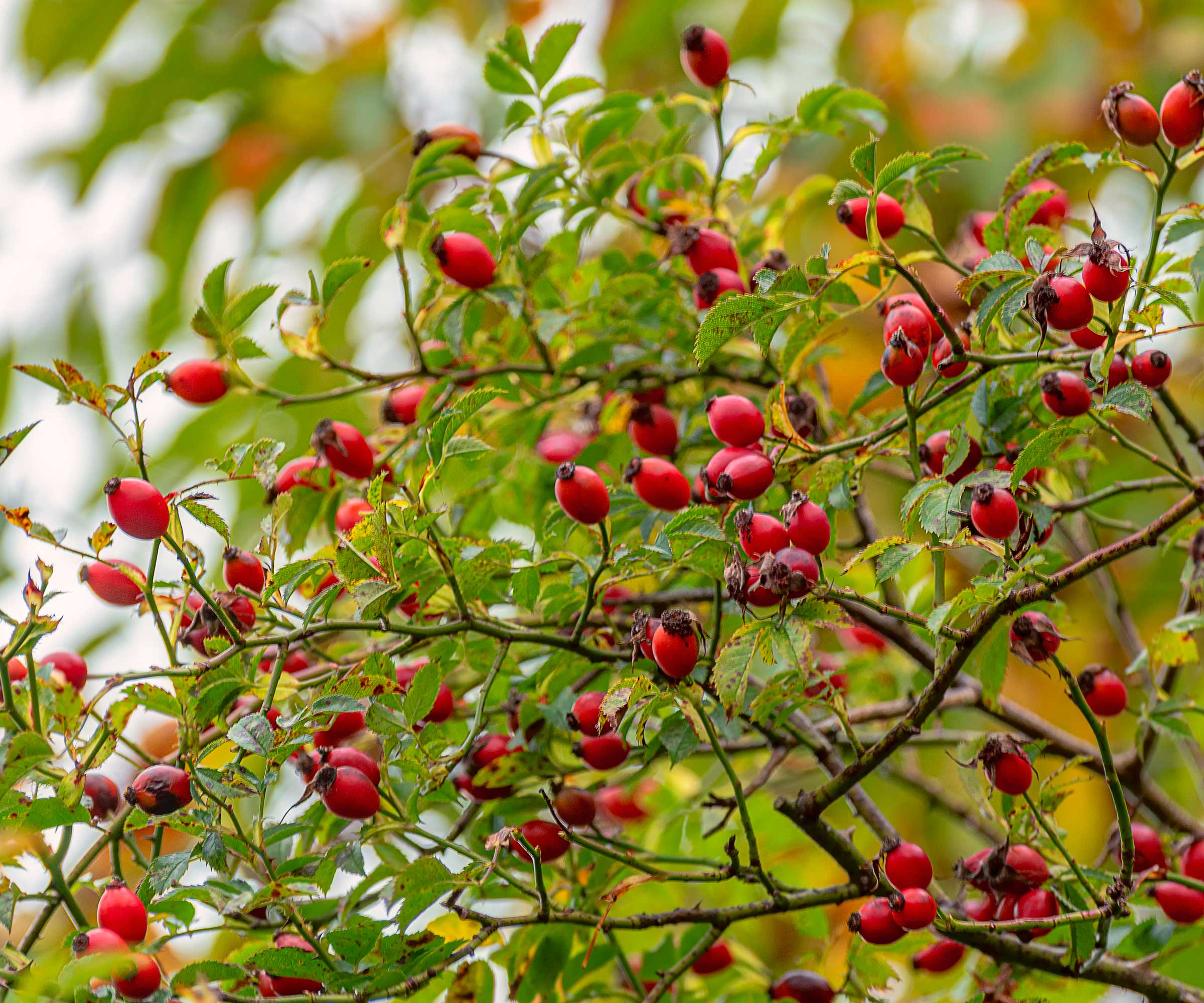
Rose hips look beautiful and are good for birds, too
While some flowers look brown, shriveled and generally unattractive once they've gone over, others actually add aesthetic value if left to their own devices.
'Some plants can look good with the ornamental seed heads remaining like butterfly vine, others not so much,' says Larry. 'So, the ideal situation would be to continue to remove until late season when they could be left and then maybe harvested to use for decorations.
For example, nigella, alliums and rudbeckia are among the best plants for seedheads, adding structure and shape to your yard in fall. They can be picked for dried arrangements indoors, too.
Some seed heads also provide a valuable food source for birds, such as sunflowers. Meanwhile, many roses will produce hips, which add a pop of color to the fall garden.
5. Cutting back foliage when deadheading spring bulbs
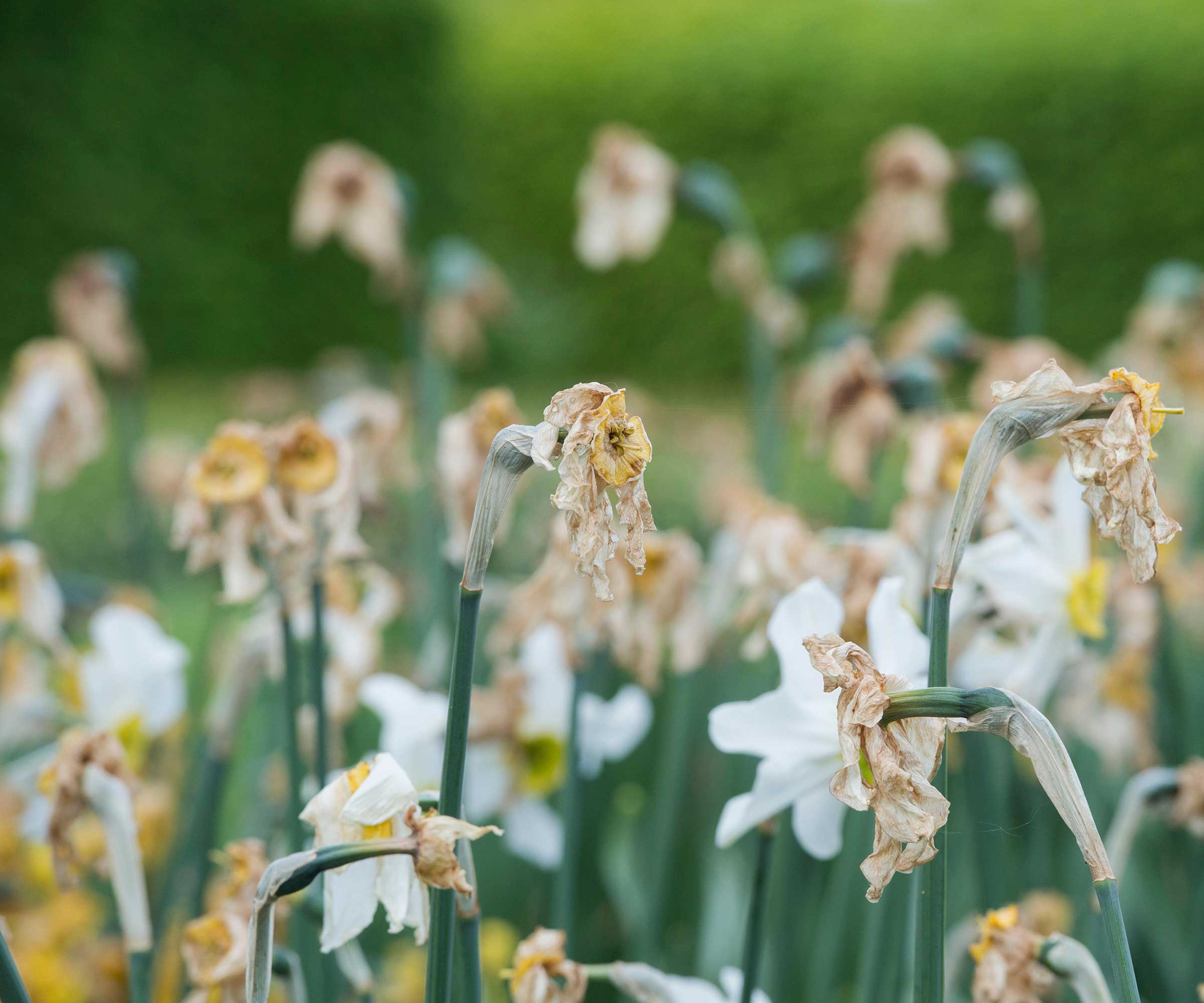
Daffodils can be deadheaded, but leave the leaves to die back naturally
When deadheading spring bulbs such as cutting back daffodils, it's tempting to cut back the foliage, too. However, doing this too early should definitely be avoided.
'We try not to do this until maybe mid-season of the bloom period. Roses are typically cut back a bit in mid-summer to stimulate a bit more new growth for a stronger bloom in the fall,' says Larry.
'Let their leaves die back naturally,' says John Negus. 'Keep the foliage watered regularly and fed fortnightly as it withers away, and this will help feed the bulbs for the following year’s spring display.' In the meantime, you can move them to a reserve bed in your yard if you find their appearance too unsightly.
FAQs
What happens if you don't deadhead spent blooms?
Deadheading should take place when flowers have started to fade. Leaving flowers after they have been spent will cause them to go to seed, apparent by their emerging seed heads. For flowers that are self-seeders, not deadheading could result in seeds naturally spreading around your yard and more plants growing where you weren't expecting them to. Not deadheading may also stop your plant flowering again in the same season.
Whether you're deadheading dahlias, deadheading lavender or another plant in your yard, it's a relaxing and worthwhile outdoor task for a sunny afternoon. But before you remove every bloom in sight at wild abandon, bear these deadheading mistakes in mind – you'll be rewarded with better results, healthier plants, and potentially, free flowers.

Holly started writing about gardening five years ago, and she is a regular contributor to Homes & Gardens. She has also written many gardening features for Woman & Home and Real Homes, too. She has previous experience as a professional gardener, where she helped to plant and maintain private gardens. Holly has also looked after allotment plots over the years and loves to grow her own flowers and veggies from seed. In her spare time, she enjoys visiting local gardens, botanical drawing, and tending to her ever-growing collection of houseplants.
- Tenielle JordisonGardens Content Editor

